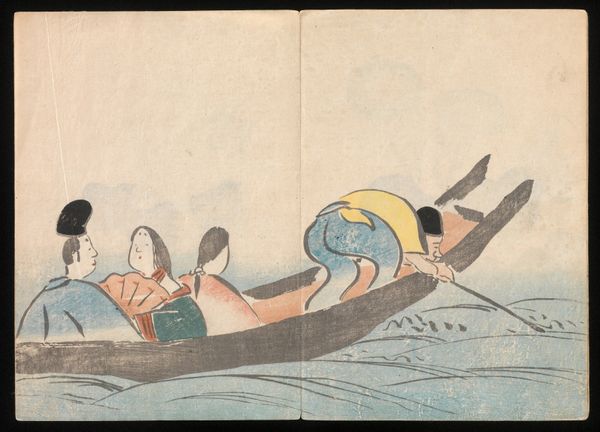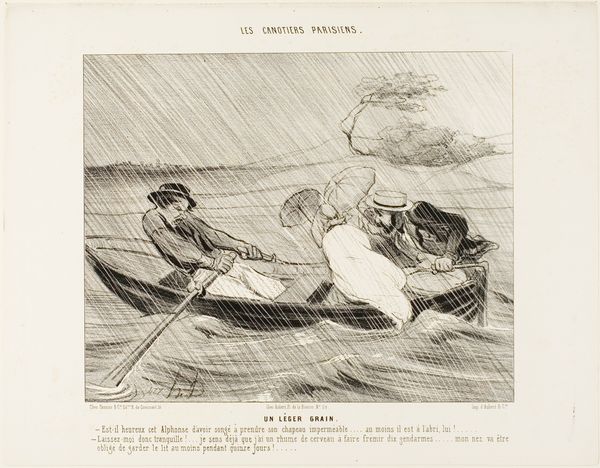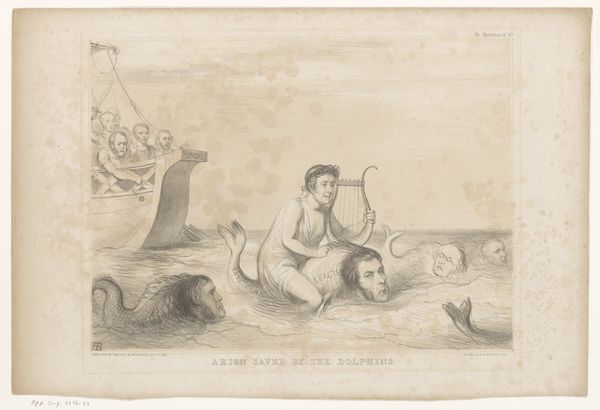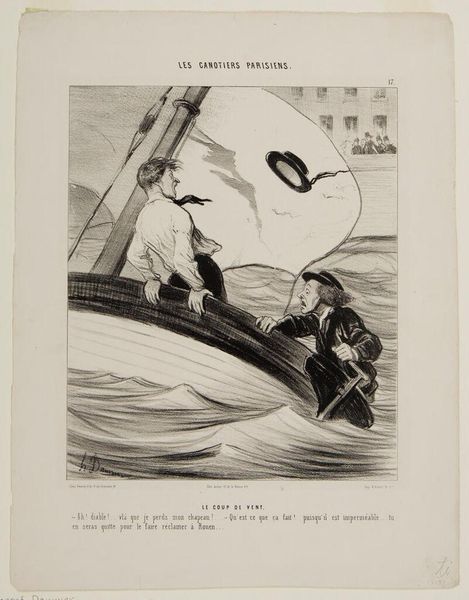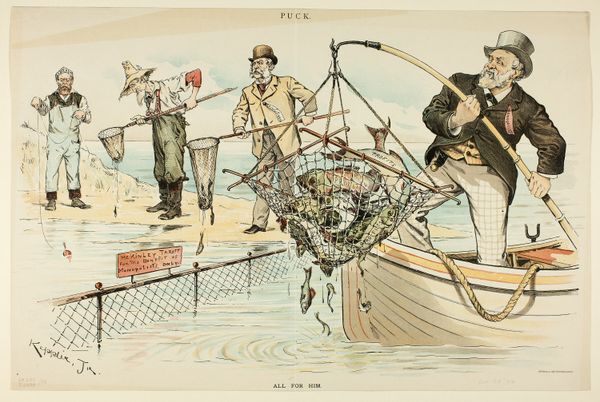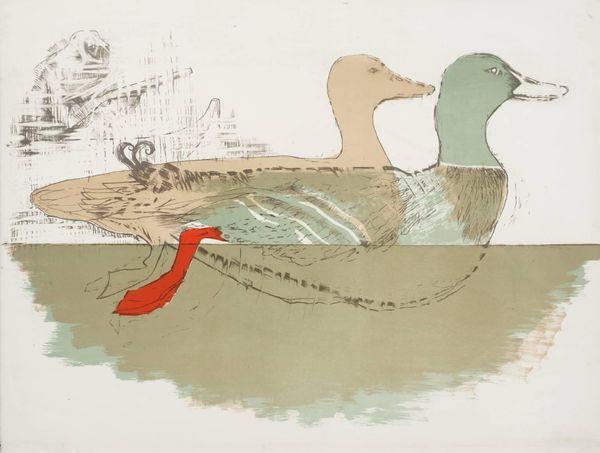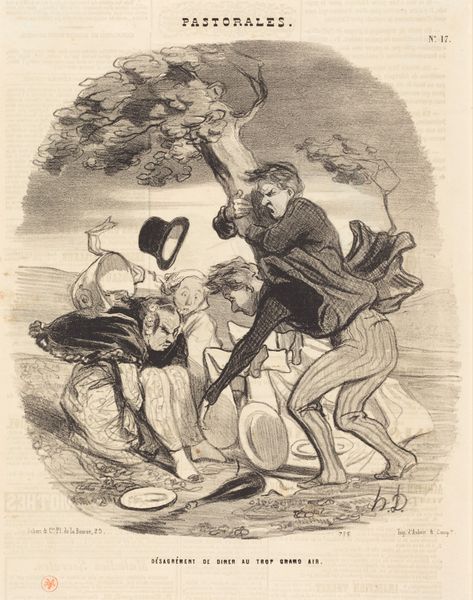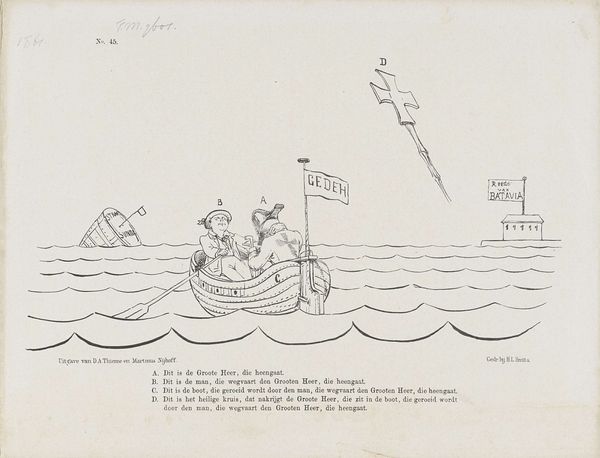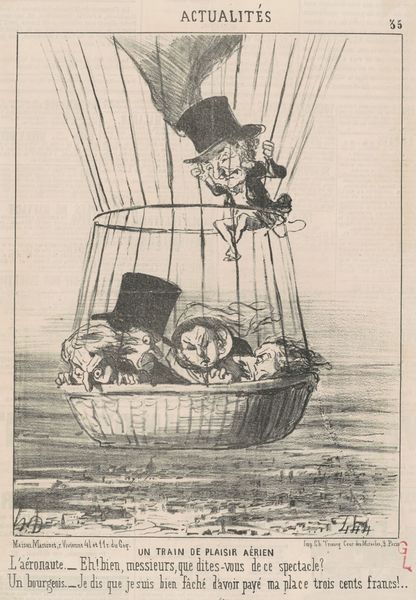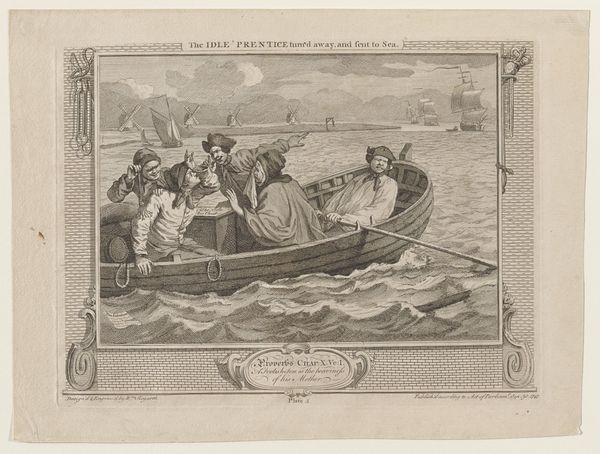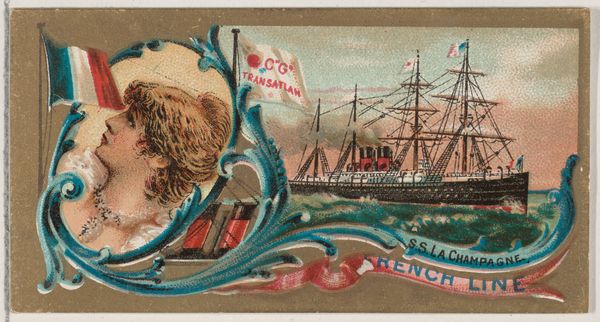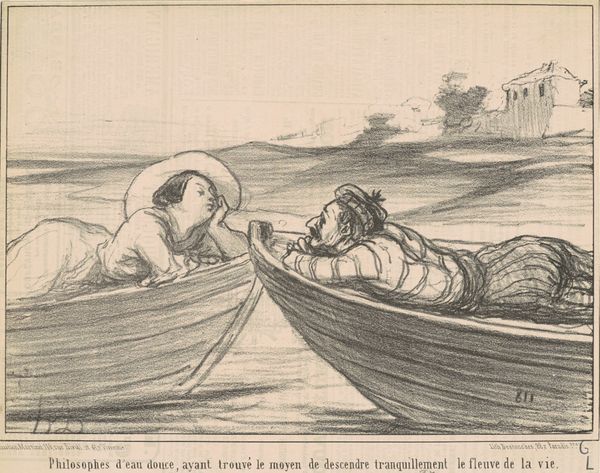
Five of Spades, With the Black Bass, from Harlequin Cards, 2nd Series (N220) issued by Kinney Bros. 1889
0:00
0:00
Dimensions: Sheet: 2 3/4 × 1 1/2 in. (7 × 3.8 cm)
Copyright: Public Domain
Curator: The item before us, titled "Five of Spades, With the Black Bass," originates from the Kinney Brothers Tobacco Company’s Harlequin Cards, dating back to 1889. It's a chromolithograph—a print—enhanced with watercolor. At first glance, what intrigues you most about it? Editor: The spatial relationships feel playfully disjointed, almost dreamlike. The size of the figures compared to the spades, the strangely linear water... it's a very self-aware composition. Curator: Indeed. Kinney Brothers issued these cards amidst rising anxieties concerning consumerism and leisure culture. What seems like a whimsical genre scene on the water serves as a commentary on societal indulgences and escapism through recreation. The racial dynamics embedded in such imagery, circulated by the tobacco industry, were inherently exploitative. Editor: The simplified forms definitely have a mass-produced feel—perfect for trade cards. The subtle colour washes overlaying the bold linework also strike me; it’s a very commercial aesthetic. It highlights surface and pattern over depth, something that fits its purpose well. Curator: Precisely. The adoption of conventions akin to ukiyo-e reflects a fascination with, and often a flattening of, Japanese aesthetics within a Western commercial context. These visual appropriations had social implications—orientalism shaped global trade relations. Editor: While that context is key, the artwork has intrinsic qualities as well. Notice the repetition of the spade shapes that are almost cartoonishly exaggerated. The geometry throughout creates a strangely rhythmic image. Curator: So it's a layering of aesthetic appreciation and critical questioning, no? This “simple” image, distributed by a corporation profiting from addiction, hints at deep global currents of culture, exploitation, and the complicated nature of “leisure." Editor: Ultimately, an exercise in analyzing what seemingly simple composition choices can signify. Curator: Exactly. It serves as a reminder that visual culture from any era is bound up in complex histories of power, identity, and cultural exchange.
Comments
No comments
Be the first to comment and join the conversation on the ultimate creative platform.
